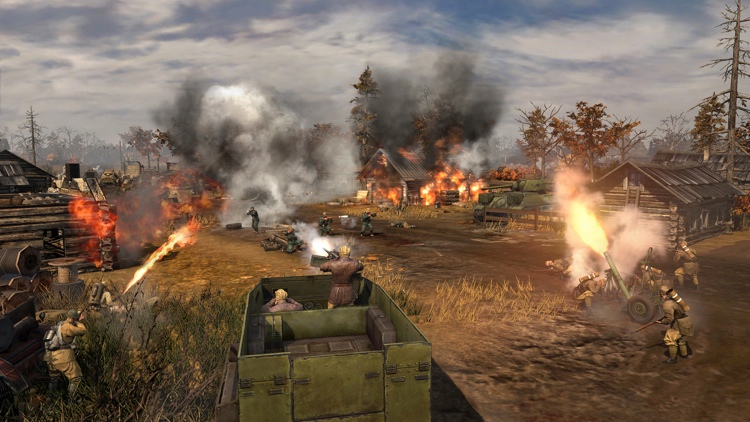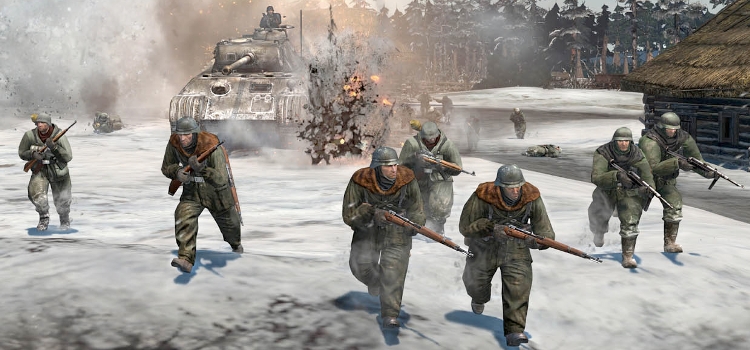It's hard to believe nearly seven years have passed since Relic Entertainment and THQ released Company of Heroes, a World War II-themed real-time strategy title that impressed the heck out of me and many other RTS buffs at the time. I even invested in the two expansions that followed – Opposing Fronts and Tales of Valor – and in addition to logging many hours of playtime, I have featured the game across plenty of CPU and GPU reviews as it's an excellent benchmark for gauging the performance of both components.
The built-in benchmark made life easy by testing a reasonable portion of the game, which became even more relevant to hardware testers like myself when Relic added a DirectX 10 rendering mode a year after Company of Heroes initially shipped, patching in enhanced terrain, additional world objects as well as improved shadows and lighting. This update made Company of Heroes the first commercial video game to support DirectX 10.

CoH was built on the "Essence Engine" which was coded from scratch by Relic to use special graphical effects including high dynamic range lighting, dynamic lighting & shadows, advanced shader effects and normal mapping. It also utilized the Havok physics engine for more realistic physics than previous RTS games. For example, high-powered weapons could blow apart buildings while tanks could drive through walls. Things like debris could also be influenced by explosions, as barrels would often go flying.
For its time, CoH was very impressive looking – particularly for an RTS – so when Relic and Sega released the game's sequel on June 25 we eagerly installed a copy and started benchmarking.
Like the original, Company of Heroes 2 is also set in World War II but focuses on the Eastern Front. It's built on Relic's proprietary Essence 3.0 engine, which will supposedly allow the developer to bring "new technological advancements" to the game. CoH 2 takes advantage of DirectX 11 but also supports DirectX 9 and its engine has a mess load of new features such as ColdTech, a dynamic system that provides effects such as snow accumulating against buildings and vehicles, restricting movement depending on the depth of the snow, and snow tracks left by units.
This extreme level of detail should be taxing all around with heavy loads on both the CPU and GPU, so we hope CoH 2 will serve as a fine PC benchmark in our reviews for years to come. In the meantime, let's see how it manages to tackle today's hardware.
Testing Methodology
We tested almost 30 DirectX 11 graphics card configurations from AMD and Nvidia covering all price ranges. The latest drivers were used and every card was paired with an Intel Core i7-3960X to remove CPU bottlenecks that could influence high-end GPU scores (at least this is what we thought, refer to the CPU testing to see what we mean).
Although we usually rely on Fraps to record up to 90 seconds of gameplay for our benchmark data, Relic has provided us with another option that happens to be both easier and more accurate. CoH 2 features a built-in benchmark that helps gamers fine tune their systems for maximum performance.
The integrated benchmark let us use several graphics quality settings so we tested on both medium and maximum. We ran CoH 2 at three common desktop display resolutions – 1680x1050, 1920x1200 and 2560x1600 – using DX11.
|
|


